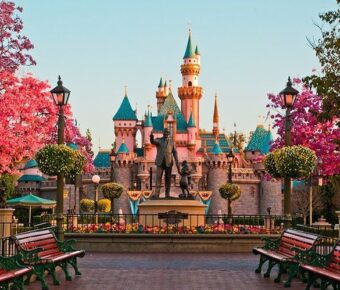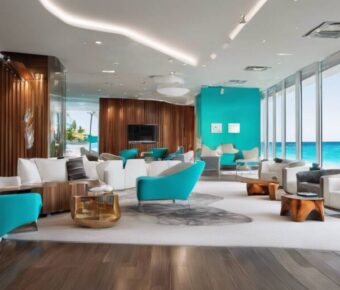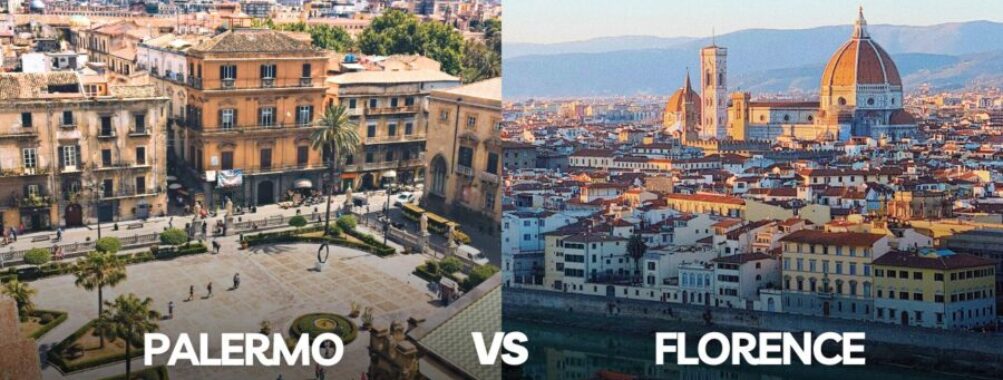
Palermo vs Florence: Ultimate Italy Showdown – Which Hidden Gem Should You Visit in 2025?
Italy offers two captivating cities that draw travelers year after year – Palermo and Florence. These destinations showcase different sides of Italian culture, from Florence’s Renaissance splendor to Palermo’s multicultural fusion. Florence appeals to art lovers and history buffs with its museums and architecture, while Palermo attracts those seeking authentic street food, diverse cultural influences, and nearby beaches at lower prices.
Each city tells a unique story through its streets and landmarks. Florence glows with Renaissance masterpieces and Medici palaces.
Palermo mixes Arab, Norman, and Roman architecture with bustling markets and coastal charm. The cost gap between these cities is notable—Florence’s living costs are about 36% higher than Palermo’s, affecting everything from hotels to restaurants.
Most travelers spend 2-7 days exploring Florence’s arts and culture, compared to 1-3 days experiencing Palermo’s food scene and historical sites. The two cities offer distinct Italian experiences that cater to different travel styles and interests.
Contents
- Historical Significance
- Palermo’s Rich History
- Florence: The Cradle of the Renaissance
- Cultural Landmarks and Attractions
- UNESCO Sites in Palermo
- Florence’s Iconic Duomo and Uffizi Gallery
- Culinary Adventures
- Discovering Palermo’s Street Markets
- Florentine Cuisine and Dining
- Artistic Heritage
- Palermo’s Norman Art Legacy
- Masterpieces of Florentine Art
- Scenic Natural Landscapes
- Coastal Beauty of Sicily
- The Rolling Hills of Tuscany
- Unique Experiences
- Historical Tours in Palermo
- The Fine Arts Scene in Florence
- Travel Tips and Accommodations
- Staying in Palermo
- Florence’s Best Hotels and Resorts
- Getting There and Around
- Transportation to and in Palermo
- Navigating Florence by Train and Foot
- Frequently Asked Questions
- What are the main cultural differences between Palermo and Florence?
- Can you highlight the unique historical attractions in Palermo compared to those in Florence?
- In terms of culinary experiences, how does the traditional food of Palermo differ from that of Florence?
- Which city offers a more authentic Italian experience for travelers seeking off-the-beaten-path activities: Palermo or Florence?
- How does the coastal charm of Palermo contrast with Florence’s Renaissance beauty?
- Could you provide insights on the seasonal travel considerations when choosing between a visit to Palermo or Florence?
- More Travel Guides
Historical Significance

Both cities hold deep historical roots that have shaped Italy’s cultural landscape. Each city tells a unique story through its architecture, art, and cultural influences spanning centuries.
Palermo’s Rich History
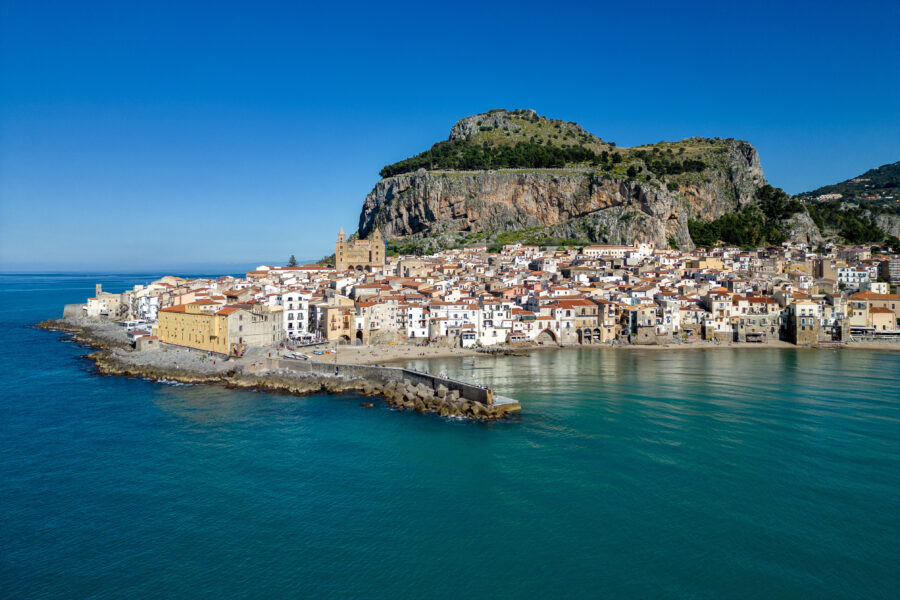
Palermo shines as a living museum of diverse cultural influences. The city showcases an amazing mix of Norman, Byzantine, and Arab architecture that you won’t find anywhere else in Italy.
The Norman Palace is the city’s crown jewel. Built in the 9th century, it features stunning Byzantine mosaics in the Palatine Chapel.
The streets of Palermo reveal layers of history at every turn. Arab-Norman churches dot the cityscape, while ancient markets like Ballarò and Vucciria still buzz with the same energy they had centuries ago.
Florence: The Cradle of the Renaissance
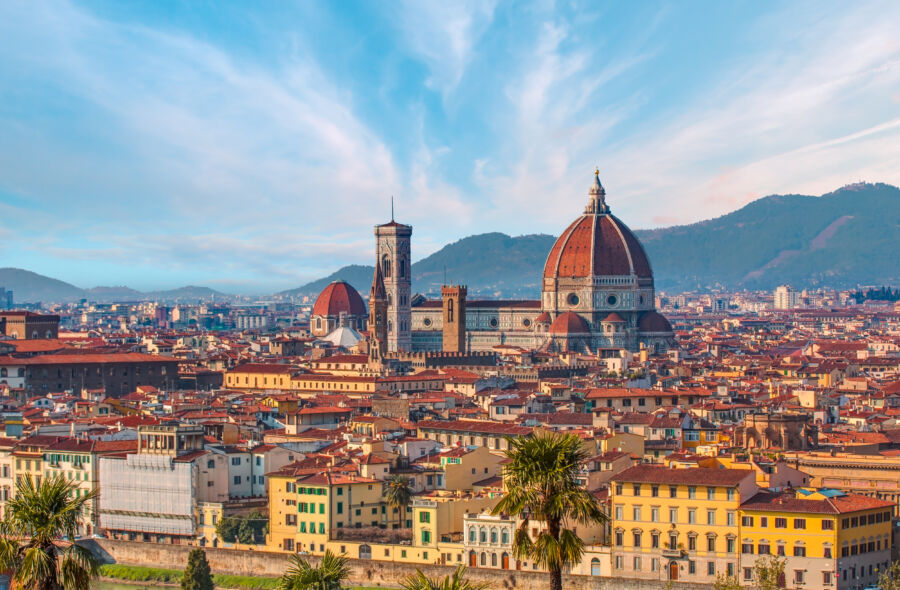
Florence transformed the world through the Renaissance, forever changing art and thinking. The city’s streets are packed with masterpieces from artists like Michelangelo, Leonardo da Vinci, and Botticelli.
The mighty Medici family ruled Florence during its golden age. They funded amazing art projects and buildings that still amaze visitors today.
The Duomo Cathedral showcases Florence’s power and wealth during the Renaissance. Its massive dome, designed by Brunelleschi, is an engineering marvel that no one thought possible at the time.
The city’s museums hold some of the world’s most famous art. The Uffizi Gallery keeps safe treasures like Botticelli’s Birth of Venus, while David by Michelangelo stands proud in the Accademia.
Cultural Landmarks and Attractions
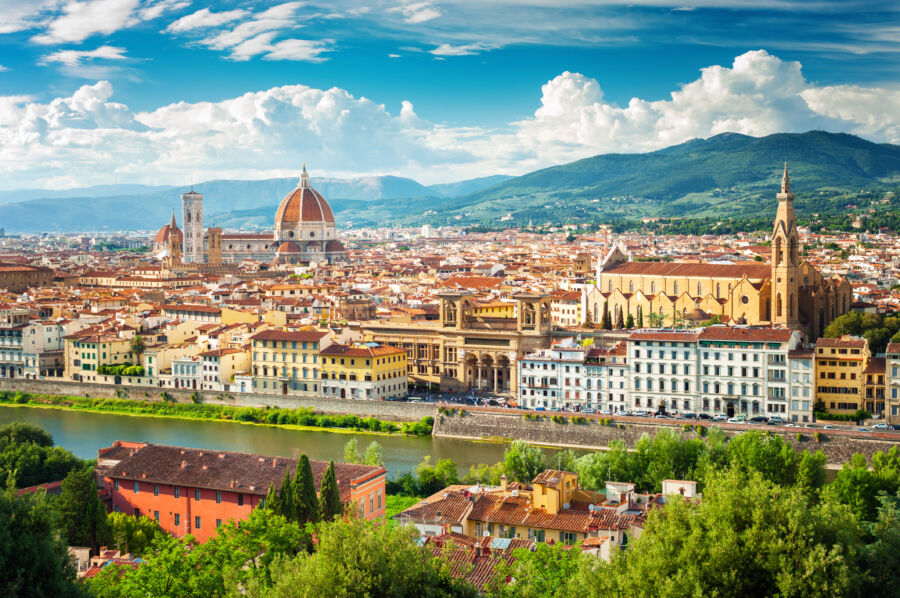
Both cities shine with incredible cultural treasures that span centuries of art and architecture. Palermo dazzles with its mix of Arab-Norman landmarks, while Florence is the birthplace of Renaissance art.
UNESCO Sites in Palermo
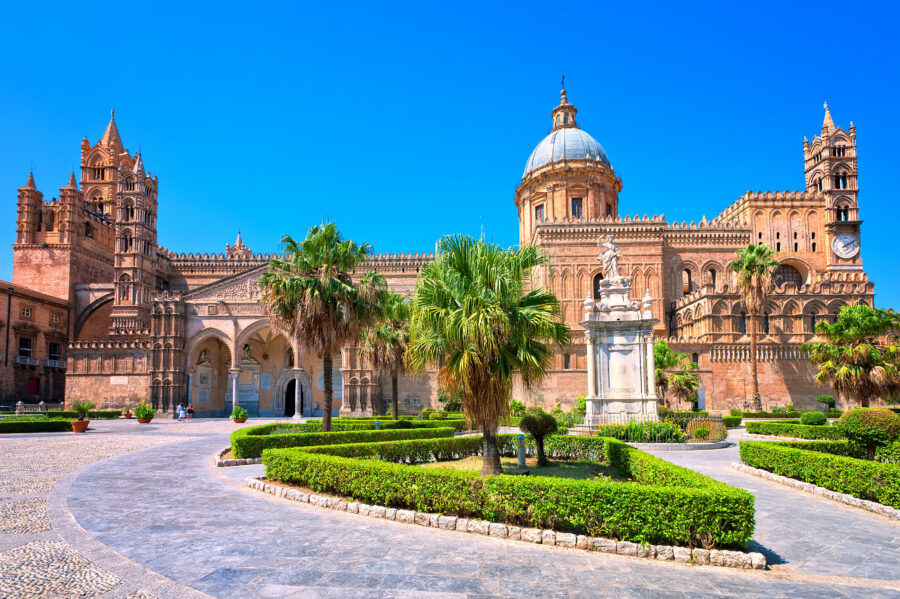
Palermo’s Arab-Norman buildings showcase a unique blend of cultures found nowhere else in Europe. The stunning Cappella Palatina features golden mosaics covering every inch of its walls and ceiling. This royal chapel combines Byzantine artistry, Arab architectural elements, and Norman military might.
The Cathedral of Palermo stands as another jewel in the city’s crown. Its mix of styles reflects the many cultures that ruled Sicily – you’ll spot Norman towers next to Moorish decorations and Gothic portals.
The Palazzo dei Normanni serves as both a royal palace and the seat of Sicily’s regional government. Its rooms display intricate decorations that tell stories of the island’s rich past.
Florence’s Iconic Duomo and Uffizi Gallery
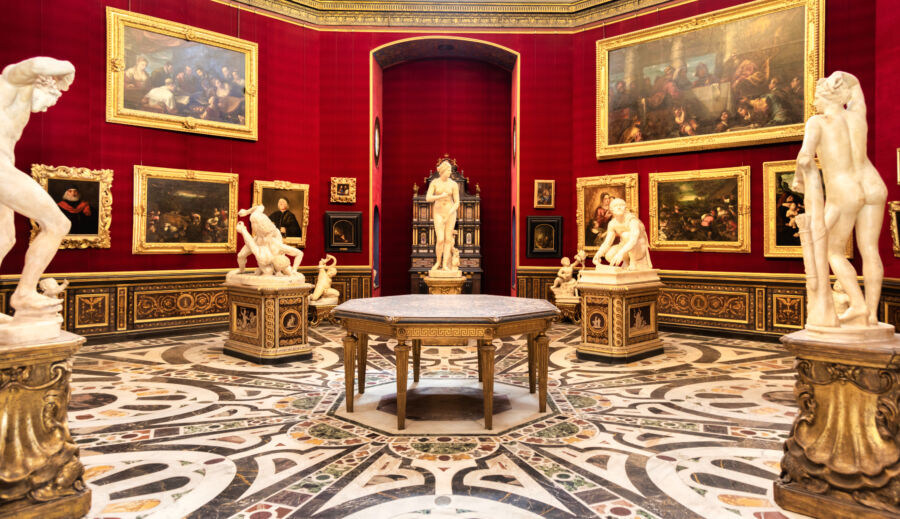
The Florence Cathedral dominates the city skyline with Brunelleschi’s massive red-tiled dome. Climbing to the top rewards visitors with stunning views across the terracotta rooftops of Florence.
The Uffizi Gallery houses the world’s greatest collection of Renaissance art. Its halls contain masterpieces by Botticelli, Leonardo da Vinci, and Michelangelo. The building, once offices for the powerful Medici family, is an architectural marvel.
Next to the Uffizi, the medieval Ponte Vecchio bridge sparkles with jewelry shops. It’s the only bridge in Florence that survived World War II, making it extra special for visitors today.
Culinary Adventures

Food adventures in both cities offer completely different experiences. Each destination brings its unique flavors and dining traditions, reflecting the local culture and history.
Discovering Palermo’s Street Markets

The ancient markets of Palermo buzz with energy and authentic Sicilian life. Mercato del Capo and Ballarò Market showcase fresh seafood, local produce, and street food vendors at every corner.
The star attraction is arancini—crispy rice balls filled with meat, cheese, or seafood. These golden treasures come in dozens of varieties unique to Palermo.
Street vendors sell panelle (chickpea fritters) and sfincione (Sicilian pizza) fresh from their carts. The smells of grilled sardines and fresh-baked bread fill the narrow market lanes.
Florentine Cuisine and Dining
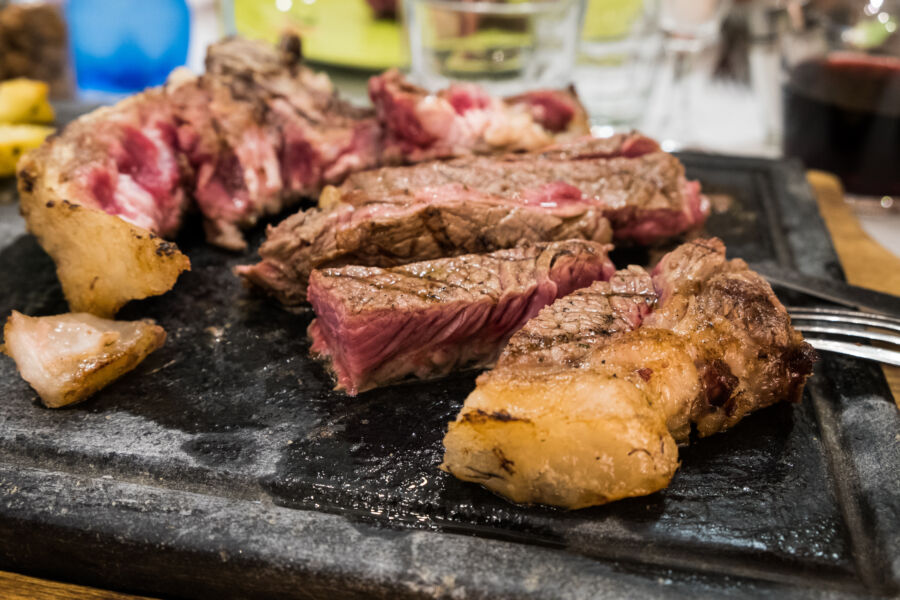
Florence’s food scene centers around traditional Tuscan dishes in historic trattorias and wine bars. The city’s signature dish is the massive bistecca alla fiorentina – a T-bone steak grilled over oak coals.
Small family-run restaurants serve hand-rolled pasta with seasonal ingredients. Try the ribollita soup made with bread and vegetables or crostini topped with chicken liver pate.
The Sant’Ambrogio Market lets visitors sample local cheeses, olive oils, and Tuscan wines. Many vendors offer tastings and cooking tips.
Wine bars called enotecas pair regional wines with meat and cheese plates. These cozy spots make perfect stops between sightseeing adventures.
See Related: Rome vs Florence: Which Italian Gem Steals the Show?
Artistic Heritage
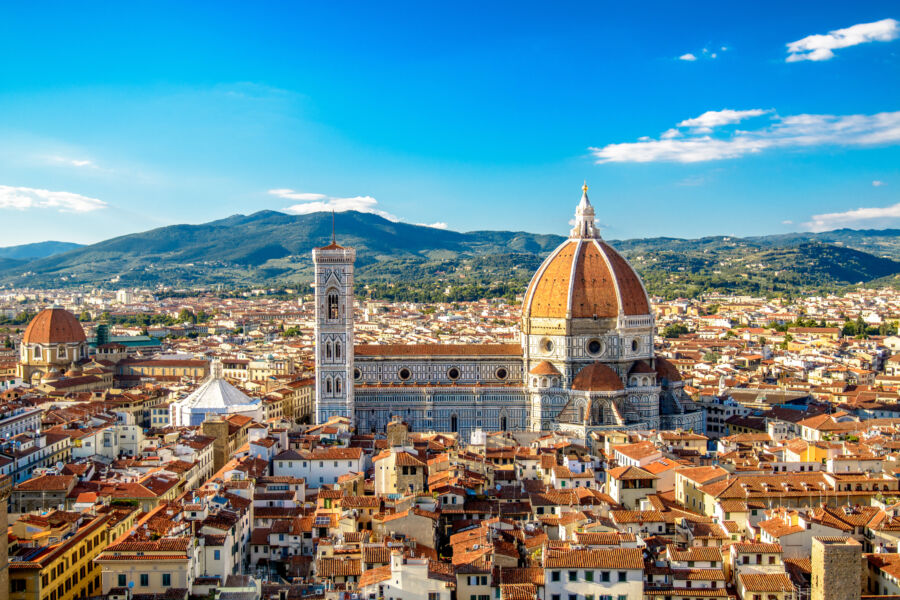
Florence and Palermo showcase two distinct artistic traditions that shaped Italian culture. Each city presents a unique blend of architectural styles, artistic movements, and cultural influences that continue to captivate visitors.
Palermo’s Norman Art Legacy
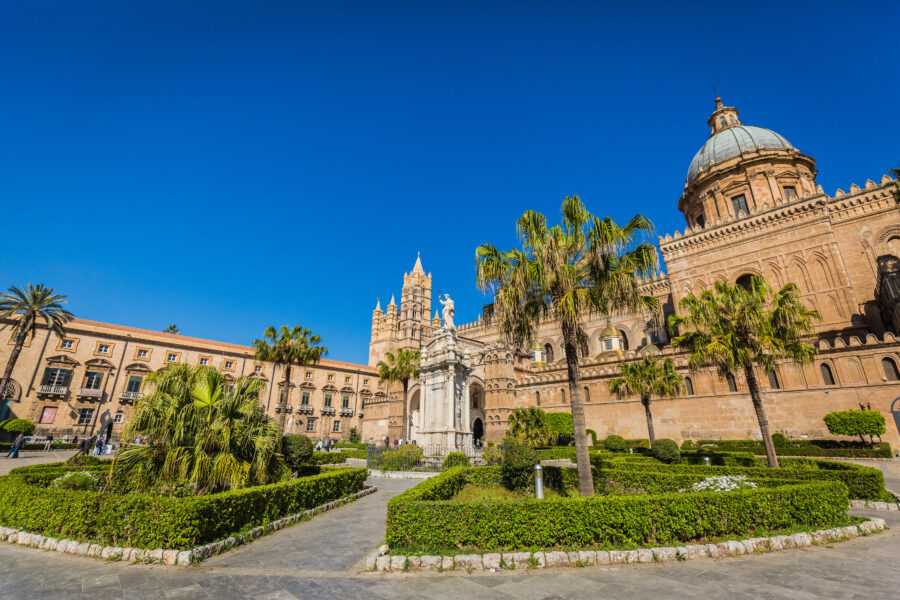
The Norman Palace stands as the crown jewel of Palermo’s artistic heritage. Its stunning Cappella Palatina features glittering Byzantine mosaics that tell biblical stories across golden walls and domed ceilings.
Arab-Norman architecture combines Islamic, Byzantine, and Romanesque styles in a rare fusion found nowhere else in Europe. The Cathedral’s exterior displays this mix through geometric patterns and pointed arches.
Local artisans still practice traditional crafts in Palermo’s historic quarters. Workshops produce colorful maiolica ceramics and intricate wood carvings passed down through generations.
Masterpieces of Florentine Art
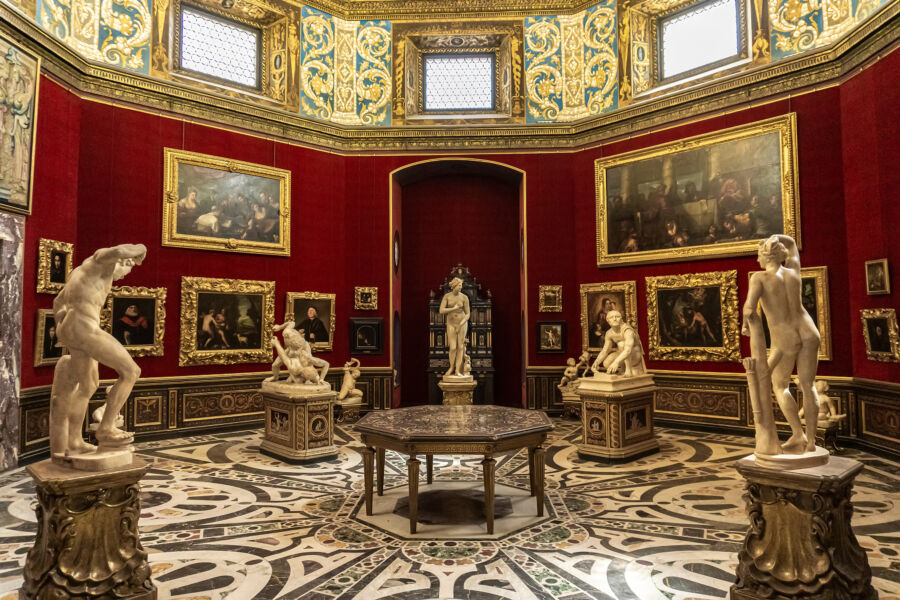
The Uffizi Gallery houses the world’s greatest collection of Renaissance art. Here, you’ll see Botticelli’s Birth of Venus and works by Leonardo da Vinci, which changed art history forever.
Michelangelo’s David at the Accademia Gallery draws millions of visitors each year. The 17-foot marble masterpiece shows why Florence became the birthplace of Renaissance sculpture.
The city itself serves as an open-air museum. From Brunelleschi’s red-tiled dome to the frescoes of Santa Croce church, Renaissance art shapes every corner of Florence’s historic center.
Street artists still work in Florence’s piazzas, carrying on centuries-old traditions. You might spot painters capturing the golden light on the Arno River or sculptors crafting miniature replicas of famous statues.
Scenic Natural Landscapes
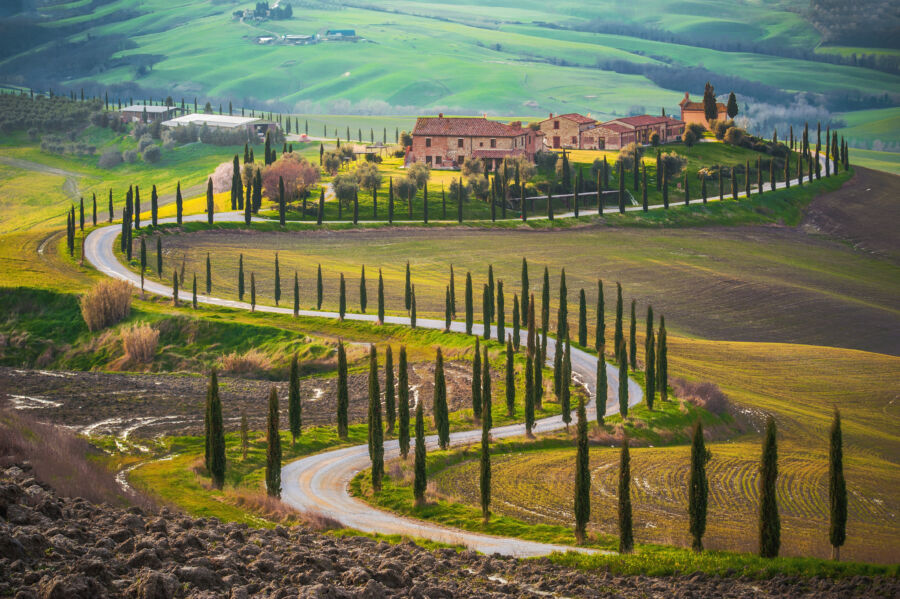
Tuscany and Sicily offer two distinct natural environments that showcase Italy’s diverse geography. The stark contrast between Sicily’s dramatic coastline and Tuscany’s gentle hills creates unique experiences for nature lovers.
Coastal Beauty of Sicily
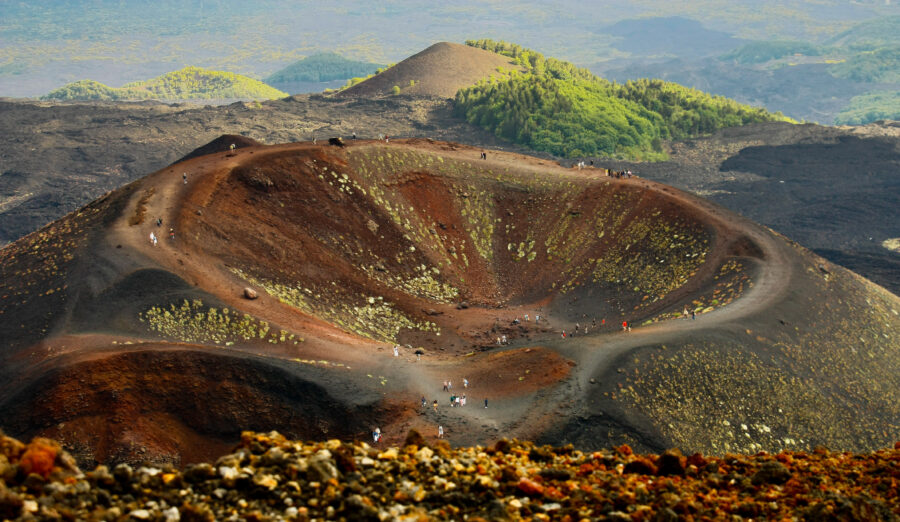
Sicily’s coastline dazzles with pristine beaches and crystal-clear Mediterranean waters. The golden sand beaches near Taormina stretch for miles, perfect for swimming and sunbathing.
Mt. Etna is Europe’s largest active volcano, dominating Sicily’s eastern skyline. Its dark volcanic slopes rise dramatically from the coast, creating an unforgettable backdrop for beach photos.
The north coast features hidden coves and rugged cliffs that drop straight into turquoise waters. Small fishing villages dot the shoreline, offering quiet spots to enjoy fresh seafood and spectacular ocean views.
The Rolling Hills of Tuscany

Florence sits surrounded by the famous Tuscan countryside, where cypress trees line winding roads through endless vineyards. The gentle slopes create a patchwork of olive groves and medieval villages.
In spring, wildflowers carpet the hills in vibrant colors. Small dirt roads connect charming farmhouses, perfect for cycling or scenic drives through the countryside.
The Arno River valley offers walking paths with views of Florence’s historic skyline. Local hiking trails wind through ancient oak forests and past centuries-old stone walls that mark property lines between farms.
Unique Experiences

Palermo and Florence offer distinct cultural encounters that reflect their deep historical roots. Each city delivers different ways to explore Italy’s rich heritage, from ancient temples to grand Renaissance art collections.
Historical Tours in Palermo
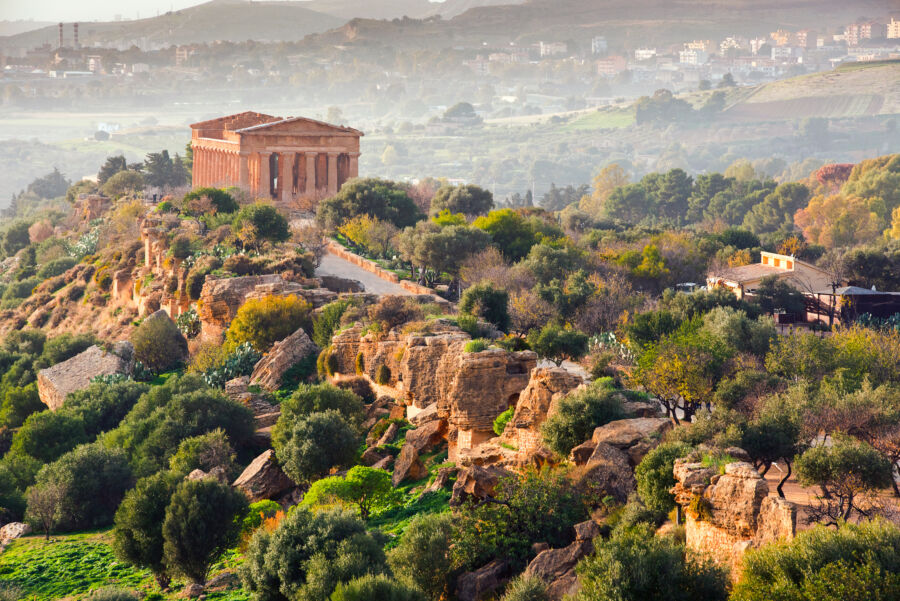
The Norman Palace is one of Palermo’s most striking landmarks. Its Palatine Chapel dazzles visitors with golden Byzantine mosaics that tell ancient stories on its walls and ceiling.
Ancient Greek temples dot the landscape around Palermo. The Valley of the Temples near Agrigento makes a perfect day trip, with its well-preserved ruins dating back to the 5th century BCE.
The city’s famous street markets, like Ballarò and Vucciria, have operated since medieval times. These bustling spots give visitors a taste of authentic Sicilian life, with local vendors shouting their goods in dialect.
The Fine Arts Scene in Florence

The Uffizi Gallery houses the world’s finest collection of Renaissance art. Tourists can spend hours studying masterpieces by Botticelli, Leonardo da Vinci, and Michelangelo.
Florence’s streets double as an open-air museum. The Ponte Vecchio bridge still holds medieval jewelry shops, while the Duomo’s massive dome defines the city skyline.
Art lovers flock to smaller museums like the Accademia Gallery, home to Michelangelo’s David. Private art studios and workshops throughout the city offer hands-on experiences in traditional crafts like leather-working and paper-marbling.
The city comes alive at night with classical music concerts in historic churches and palaces.
See Related: Florence vs Venice: Which Italian Gem Should You Visit First?
Travel Tips and Accommodations
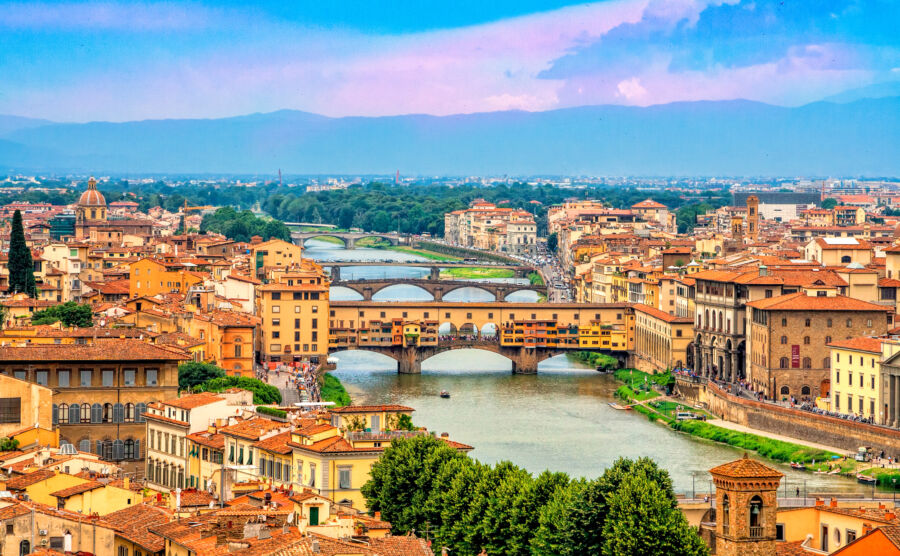
Both cities offer unique places to stay, from luxury hotels to cozy B&Bs. The best time to visit depends on your comfort with crowds and weather preferences.
Staying in Palermo
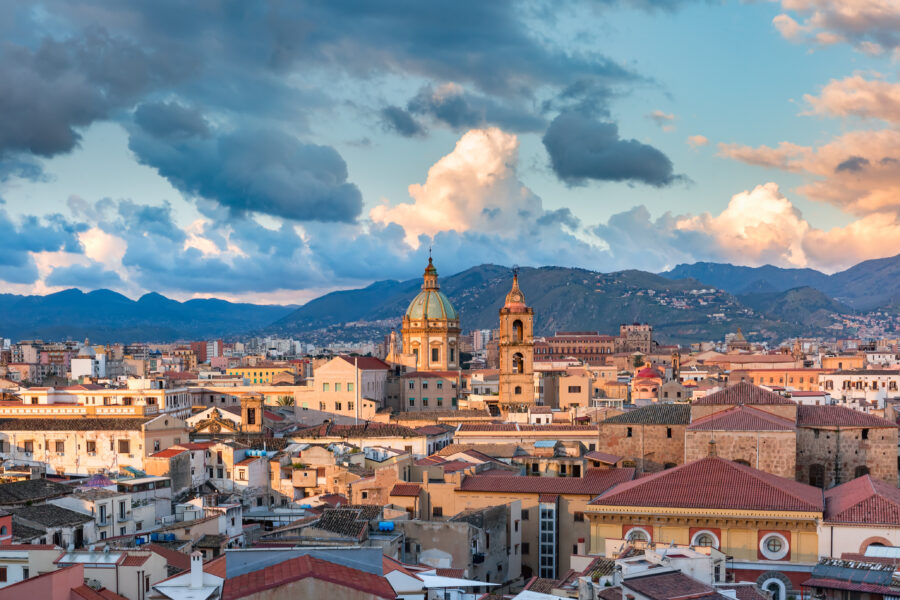
Book accommodations at least 6 months ahead in Palermo, especially during the summer’s peak season. The city fills up fast with tourists seeking sunny Mediterranean weather.
B&Bs shine as top picks here. Local hosts often share secret spots and hidden gems you won’t find in guidebooks. Many B&Bs sit in charming historic buildings near major attractions.
Summer brings crowds and higher prices to Palermo. Spring (March-May) and fall (September-November) offer pleasant weather and fewer tourists.
Florence’s Best Hotels and Resorts

Historic buildings turned into hotels define Florence’s accommodation scene. Many rooms feature Renaissance architecture and original frescoes, letting guests live like Medici nobles.
Apartment rentals near the Duomo or Ponte Vecchio put you in Florence’s heart. These spots let you shop local markets and cook authentic Tuscan meals.
Winter visitors enjoy lower rates and shorter lines at museums. The city sees less sun than Palermo in winter, with about 105 hours of sunshine from December through February.
Pro tip: Pick a spot near the train station for day trips to other Tuscan towns. Many hotels offer bike rentals – perfect for exploring Florence’s narrow streets.
Getting There and Around

Getting between and around these Italian cities requires different transportation methods based on their unique geography and infrastructure. Each city has distinct options that shape how you explore it.
Transportation to and in Palermo

Getting to Palermo takes more planning than many Italian cities. Most flights connect through Rome, making air travel less direct. The train journey from Rome to Palermo requires about 12 hours and includes a ferry crossing.
Moving around Palermo is best done using a combination of walking and public buses. The city’s historic center is walkable, with many narrow streets perfect for exploring on foot.
The main train station, Palermo Centrale, is conveniently located in the city center. It connects to other Sicilian destinations and provides a link to mainland Italy via the rail ferry service.
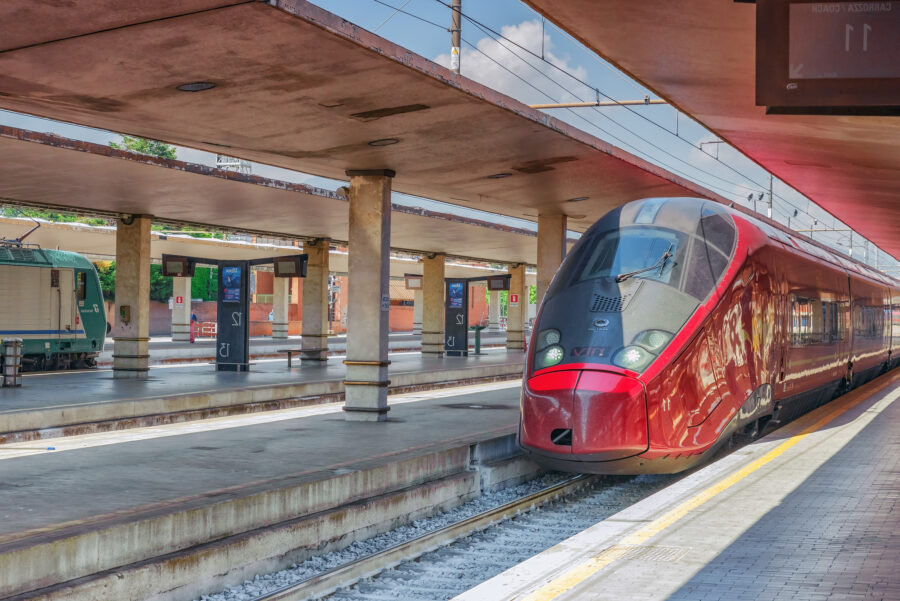
Florence’s central location makes it easy to reach by train. High-speed rail connects Florence to Rome in just 1.5 hours and to Naples in about 3 hours. The main station, Santa Maria Novella, is in the city center.
The compact historic center of Florence makes walking the best way to explore. Most major sites sit within a 20-minute walk of each other.
The city runs a reliable bus system for reaching the outer areas. Tickets must be bought in advance at tabacchi shops or newsstands, not on the bus itself.
Pro tip: Book train tickets to Florence in advance for the best prices. The popular Rome-Florence route often sells out during peak season.
See Related: Florence vs Siena: A Local’s Guide to Tuscany’s Most Beautiful Rival Cities
Frequently Asked Questions

Palermo and Florence offer distinct experiences shaped by their unique histories, locations, and cultural influences. These cities showcase different sides of Italy through their architecture, food, and local traditions.
What are the main cultural differences between Palermo and Florence?
Palermo’s art, architecture, and daily life blend Arab, Norman, and Spanish influences. The city’s street markets and social gatherings create a lively Mediterranean atmosphere.
Florence is the birthplace of the Renaissance, emphasizing art, literature, and classical learning. The city maintains a more structured, formal cultural approach with museums, galleries, and classical music venues.
Can you highlight the unique historical attractions in Palermo compared to those in Florence?
Palermo features the Norman Palace with its golden Palatine Chapel, the stunning Cattedrale di Palermo, and the fascinating Capuchin Catacombs. Arab-Norman architecture dominates the cityscape.
Florence showcases the magnificent Duomo, Michelangelo’s David at the Accademia, and the vast art collections of the Uffizi Gallery. The Ponte Vecchio and Palazzo Vecchio represent classic Renaissance design.
In terms of culinary experiences, how does the traditional food of Palermo differ from that of Florence?
Palermo’s cuisine features seafood, citrus fruits, and Arab-influenced dishes like arancini and pasta con le sarde. Street food plays a big role in the food culture, with local markets offering fresh ingredients and ready-to-eat delicacies.
Florentine food focuses on hearty Tuscan traditions with dishes like bistecca alla fiorentina and ribollita soup. The city takes pride in its wine culture, with many enotecas offering regional varieties.
Which city offers a more authentic Italian experience for travelers seeking off-the-beaten-path activities: Palermo or Florence?
Palermo provides raw, unfiltered Italian life through neighborhood markets, local festivals, and hidden churches. The city keeps many old traditions alive, from puppet theaters to street vendor calls.
Florence’s authenticity comes through in its artisan workshops, small family restaurants, and local wine bars in areas like Oltrarno. Morning walks reveal locals getting coffee and fresh bread from neighborhood spots.
How does the coastal charm of Palermo contrast with Florence’s Renaissance beauty?
Palermo’s seaside location brings cooling breezes and beautiful waterfront views. The nearby beaches and fishing villages add to its Mediterranean character.
Florence is a beautiful city surrounded by Tuscan hills, inland along the Arno River. Its beauty comes from its perfectly preserved Renaissance architecture and carefully planned urban layout.
Could you provide insights on the seasonal travel considerations when choosing between a visit to Palermo or Florence?
Palermo enjoys mild winters and hot summers, with more sunny days throughout the year. During peak tourist seasons, the city becomes less crowded.
Florence faces hot, humid summers and cool winters. July and August bring large crowds, and some businesses close in August for vacation. Spring and fall offer the best weather for both cities, with fewer tourists and comfortable temperatures for exploring.

